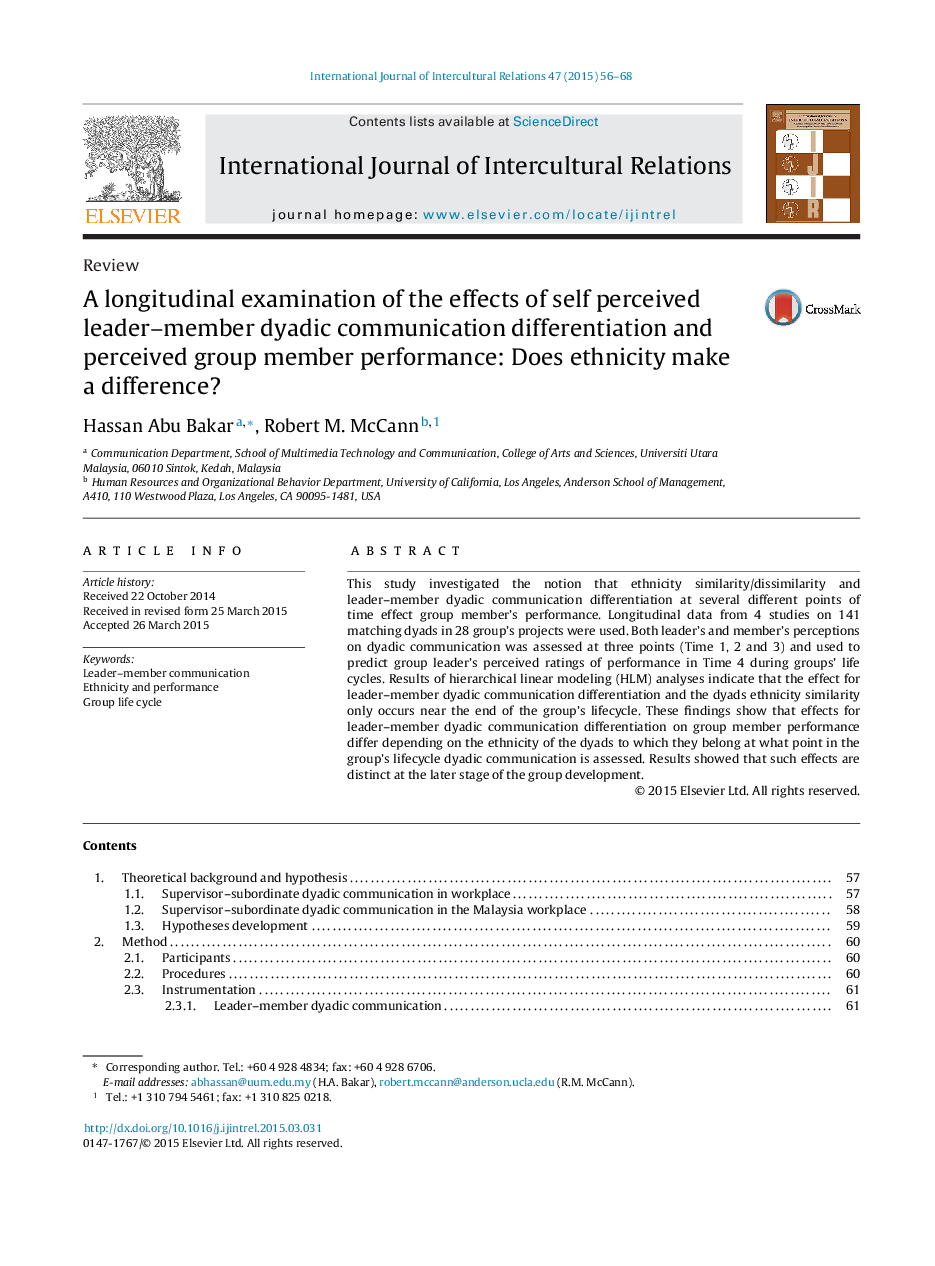| Article ID | Journal | Published Year | Pages | File Type |
|---|---|---|---|---|
| 947003 | International Journal of Intercultural Relations | 2015 | 13 Pages |
This study investigated the notion that ethnicity similarity/dissimilarity and leader–member dyadic communication differentiation at several different points of time effect group member's performance. Longitudinal data from 4 studies on 141 matching dyads in 28 group's projects were used. Both leader's and member's perceptions on dyadic communication was assessed at three points (Time 1, 2 and 3) and used to predict group leader's perceived ratings of performance in Time 4 during groups’ life cycles. Results of hierarchical linear modeling (HLM) analyses indicate that the effect for leader–member dyadic communication differentiation and the dyads ethnicity similarity only occurs near the end of the group's lifecycle. These findings show that effects for leader–member dyadic communication differentiation on group member performance differ depending on the ethnicity of the dyads to which they belong at what point in the group's lifecycle dyadic communication is assessed. Results showed that such effects are distinct at the later stage of the group development.
